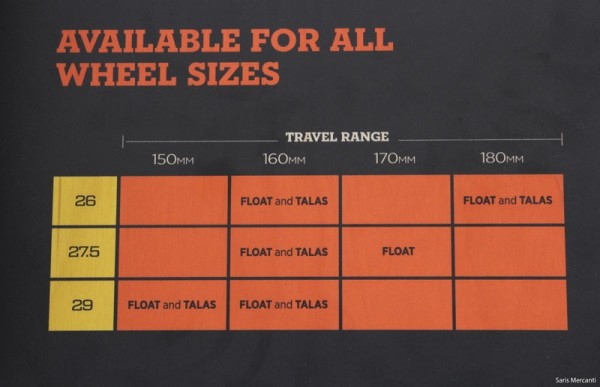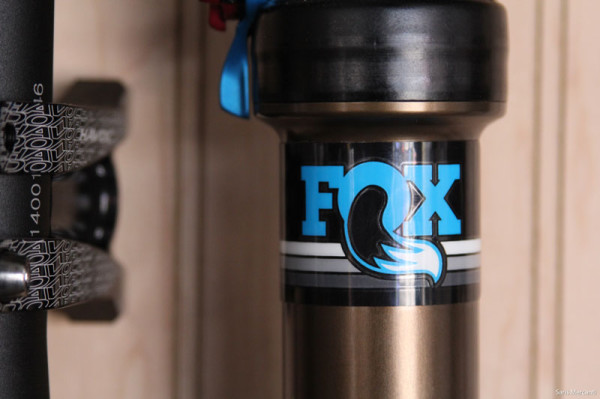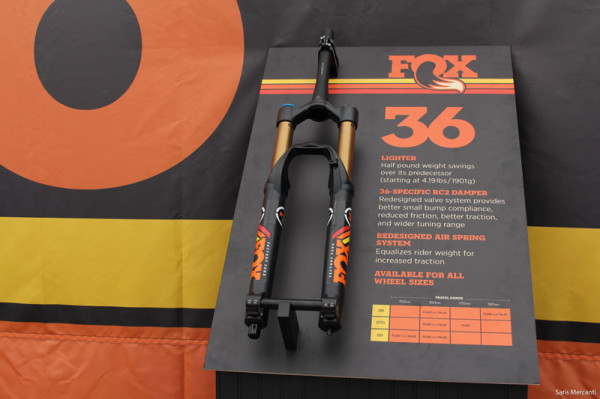 Earlier this month we took a quick look at the big 2015 Fox product launch, but we finally had the opportunity to put our greasy paws on the new product at Sea Otter. In addition to snapping some photos and turning knobs, we also had the opportunity to sit down with Global Marketing Manager Mark Jordan to learn a little more about the new toys.
Earlier this month we took a quick look at the big 2015 Fox product launch, but we finally had the opportunity to put our greasy paws on the new product at Sea Otter. In addition to snapping some photos and turning knobs, we also had the opportunity to sit down with Global Marketing Manager Mark Jordan to learn a little more about the new toys.
For this year, the big story is the revamped 36 fork. This is the model we all used to lust over, but it had fallen out of favor in recent years due to the emergence of the new 34mm standard.
So why does this new version of one of our favorite forks have us so excited?
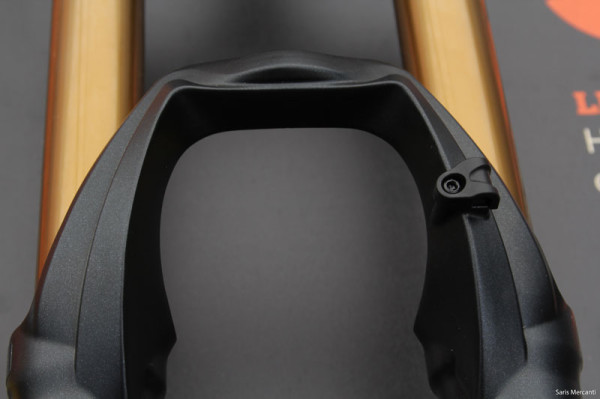 The biggest changes to the new product line are on the inside, but the external chassis have also seen improvements.
The biggest changes to the new product line are on the inside, but the external chassis have also seen improvements.
The outgoing 36 180mm fork had a similar axle-to-crown as a Fox 40, and the 36 160m fork was nearly a half an inch taller than a 34mm fork with the same travel. And while those numbers may seem alarming, those products actually shorter axle-to-crown than many competitors products.
For the new 36, the crown has been redesigned so that the axle-to-crown is significantly lower than previous models. This latest 160mm 36 shares a similar axle-to-crown height as the 34m fork, and the new 29er model is actually a few mm shorter than the existing 34mm 29er fork.What this means is that owners of 26″ and 27.5″ bikes can replace their existing forks without heavily altering the ride characteristics of their current bikes, while owners of 29ers can actually swap in a fork that has 10mm more travel, without changing the ride height.
For those interested, here are the axle-to-crowns of the new 2015 Fox 36 Forks:
1. 26: 160=536.4mm, 180=556.4mm
2. 27.5: 160=549.1mm, 170=559.1mm
3. 29: 150=mm, 160=567.1mm
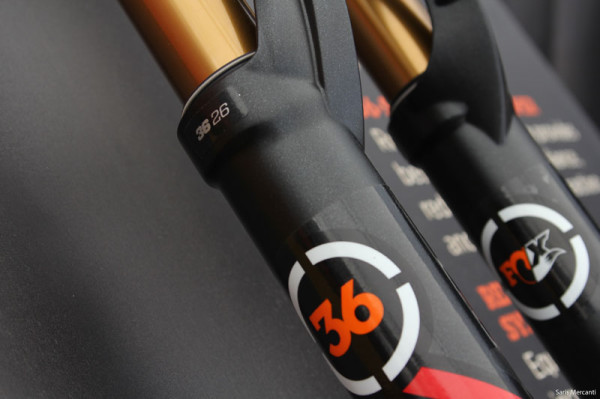 The lowers have also been redesigned to take advantage of advancements in magnesium casting technology, which has lead to significant weight savings.
The lowers have also been redesigned to take advantage of advancements in magnesium casting technology, which has lead to significant weight savings.
How light is the new fork? A tapered steer 36 Float for 27.5″ wheels has a claimed weight of 4.24 lbs (with star nut.) Thats less than the 4.3 lb claimed weight of a 34mm Fox Float of the same travel! One other thing to note is that you can directly mount a 180mm caliper to the 36 fork, which helps save a few grams by eliminating the need for an adapter.
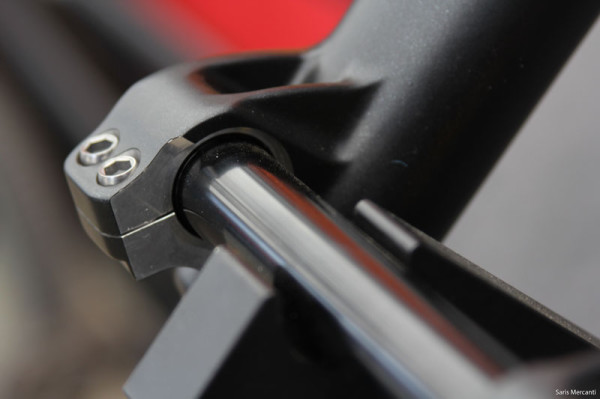 Down at the bottom, the 36 chassis has a new axle design that eliminates the QR clamps. According to Fox, this system is lighter and stiffer, avoids unnecessary complexity, and reduces construction costs.
Down at the bottom, the 36 chassis has a new axle design that eliminates the QR clamps. According to Fox, this system is lighter and stiffer, avoids unnecessary complexity, and reduces construction costs.
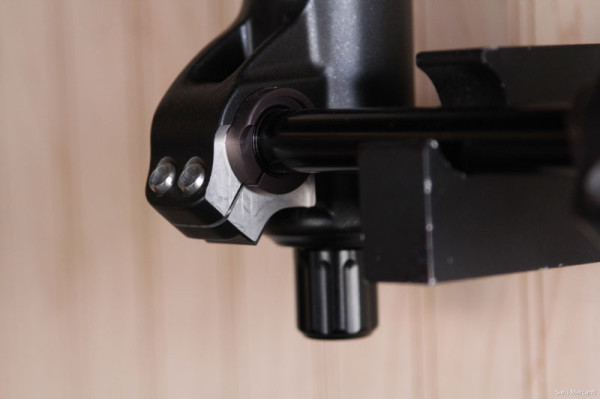 The main advantage for most riders though will be the ability to easily convert between the 15mm and 20mm axle standards. The fork will ship with both axles, so you run whatever axle standard your wheels are currently setup with, or easily swap between “trail” and “park” wheelsets.
The main advantage for most riders though will be the ability to easily convert between the 15mm and 20mm axle standards. The fork will ship with both axles, so you run whatever axle standard your wheels are currently setup with, or easily swap between “trail” and “park” wheelsets.
While the “old” 36 lowers could squeeze a meaty 27.5″ tire (although Fox strongly advises against it), the new forks are available in every popular wheel size. Not only can you pick this fork up in a 26″, 27.5″, or 29″ version, but they are also making models with a straight steer. That means that even if your bike is ancient by current industry standards, you’ll not only have newer suspension options, but you can mix and match angle set cups to help improve handling.
We don’t have a full list of pricing, but a 36 Float with a 1/8th steer for 26″ wheels will retail for $1,035, and the tapered 26″ and 27.5″ model will retail for $1,050. The 36 160mm Talas featuring the same fantastic hydraulic system as the 34 mm model will be $1,150 MSRP.
TL;DR: Prices for the 36 will hover at just over a thousand dollars, which is comparable to the cost of a new Rockshox Pike.
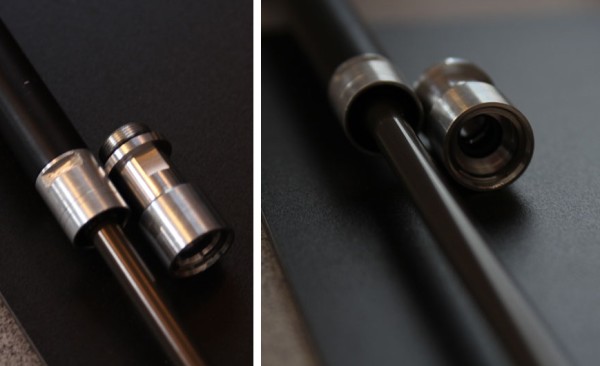 On the internals side, the Fox 36 utilizes the same beloved RC2 cartridge, but it’s been retuned drastically to match the new chassis wide improvements. In fact, the fork is so smooth now, that Fox has to add compression.
On the internals side, the Fox 36 utilizes the same beloved RC2 cartridge, but it’s been retuned drastically to match the new chassis wide improvements. In fact, the fork is so smooth now, that Fox has to add compression.
Specifically for the 36, the internal improvements refer to a new air spring design, but all the single crown products have received small updates that offer big performance boosts.
All the fork tubes now go through an extra polishing step that ads an extra layer of buttery-ness to the travel. Not only does this mean Kashima coated forks perform better, but they found in testing that the regular anodized forks are performing at the same level of smoothness as the older Kashima coated models!
Fox is also utilizing a new specially formulated lubricant with molybdenum to minimize friction, which they they call 20W Gold, and was tested extensively last seasons by the company’s RAD (Racing Applications Development) Program. Lastly, all the forks will see a revised seal head (pictured above), that helps reduces friction by roughly half.
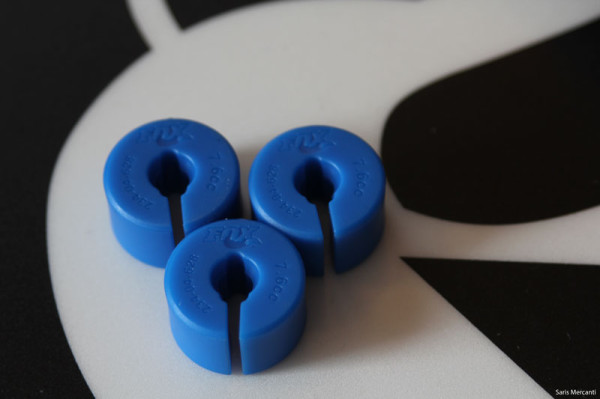 A notable new addition for tuners is these Fox Float Spacers. Installation is as easy as unthreading the air assembly and clipping the plastic spacers in place, but the performance benefits are huge. By placing these spacers in your fork , you reduce the volume of your air spring, and will cause the fork to feel more progressive.
A notable new addition for tuners is these Fox Float Spacers. Installation is as easy as unthreading the air assembly and clipping the plastic spacers in place, but the performance benefits are huge. By placing these spacers in your fork , you reduce the volume of your air spring, and will cause the fork to feel more progressive.
All 36 models will ship with one blue 7.6 cc spacer installed and an additional 3 blue spacers will be included in the box. An orange 10.8 cc spacer will also be available aftermarket. For now, these spacers will only be available for the 36 platform, but we wouldn’t be surprised to see an aftermarket kit for 32 and 34mm forks in the future.
For now, there is no official word on if you can still reduce the travel of the new 36 forks to dirt jumper levels, but we’re told you could theoretically reduce the volume of a 160mm down to at least 110mm. That said, Fox has not done sufficient testing to determine the effects on the air spring, etc…So you’re better off running the recently updated 831 DJ fork.
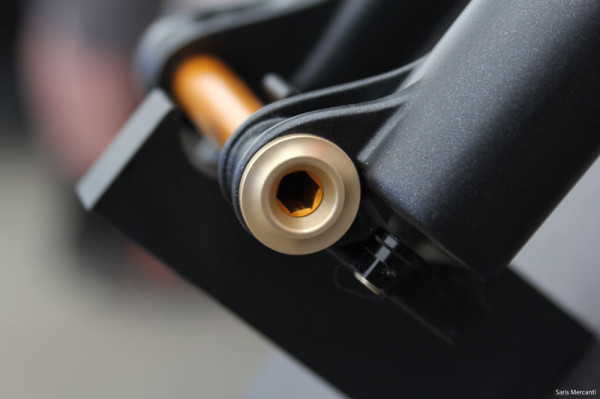 Also on display at the Fox booth was a RAD Fork with a Kabolt Axle. This interface was created at the behest of Geoff Kabush, who wanted something lighter than a QR and that could removed with power tools for faster wheel swaps. The design is not available to us plebs, but we’re told it is 40 gm lighter than the QR.
Also on display at the Fox booth was a RAD Fork with a Kabolt Axle. This interface was created at the behest of Geoff Kabush, who wanted something lighter than a QR and that could removed with power tools for faster wheel swaps. The design is not available to us plebs, but we’re told it is 40 gm lighter than the QR.
Heritage Products
This year marks the 40th Anniversary of Fox Racing, so the company is releasing new heritage decals, and they look fantastic.
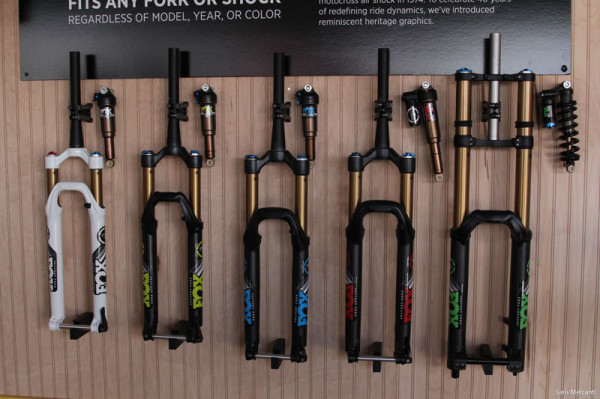
For $15 at the Otter, you could buy a package that contained a set of fork decals, a variety of shock decals, and an assortment of vintage stickers in your your preferred color.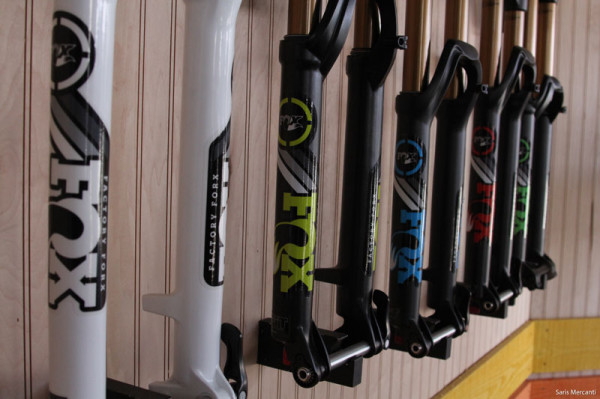
The new decals are a simple and inexpensive way to customize your bike.

At the show, they also had a vintage truck decked out in retro decals, with a vintage Bell Moto 3 in the passenger seat.
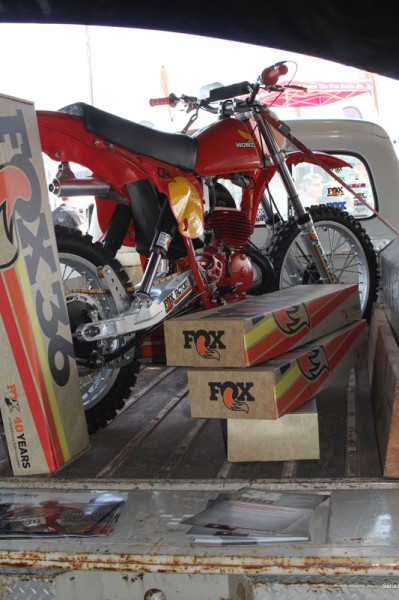 The back of which contained a fully restored vintage Honda, decked out with the Fox Air shocks that helped kick start the company’s reputation. We’re not sure if the heritage Fox boxes pictured will make it into production, but let them know in the comments if you like the look.
The back of which contained a fully restored vintage Honda, decked out with the Fox Air shocks that helped kick start the company’s reputation. We’re not sure if the heritage Fox boxes pictured will make it into production, but let them know in the comments if you like the look.
